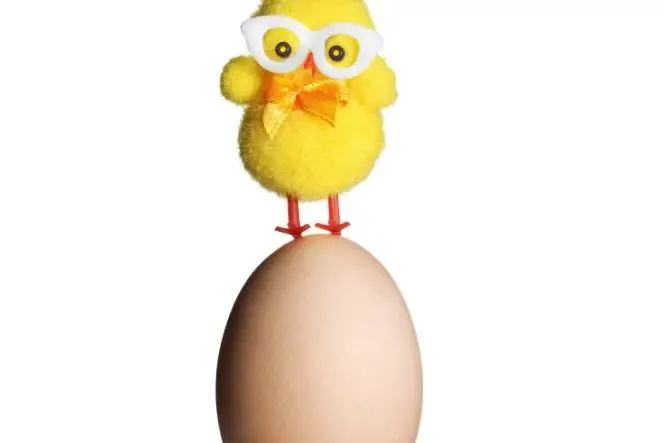Eggshells are fragile. Everyone knows that. Drop an egg on the floor, or knock it against a sharp edge (like a frying pan) and that is it – eggshell, white and yolk everywhere. But how can an eggshell possible protect a growing chick?
Why do Eggshells Need to be Strong?
Birds incubate (keep warm) their eggs by sitting on them. Eggshells need to be strong to stop the growing chick from being squashed by the adult bird. The shell also protects the chick from infection, but allows it to get oxygen and get rid of carbon dioxide. The eggshell is made of protein and calcium and is lined with a membrane.
How Strong is the Shell?
Eggshells are actually really strong, but only in one direction. How many books can eggshells support?
Put four bottle caps on the table (with lots of newspaper underneath) and balance whole eggs (raw or hard-boiled), small end down, in the bottle caps. Carefully put a wooden board on top of the eggs, and then slowly pile books on top until the eggshells break and then weigh the books. Try it with eggs balanced on their side – do these support the same number of books?
For a less messy experiment, take four eggs, gently break a hole at the small end and pour out the yolk and white (save these to make scrambled egg for lunch). Carefully remove half of the shell to leave four half eggshells (wrapping sticky tape round the middle of the egg and cutting through this might make is easier). Put the half eggshells on the table, round ends up, and carefully put a book on top, with an eggshell at each corner.
Gently pile books on top until the eggshells break and then weigh the books.
Eggshells are so strong because of their dome shape. Domes distribute the weight at the top to all parts of the eggshell (or building). Bridge arches work in a similar way
How Strong is the Inner Membrane?
Put a whole egg in a bowl, cover it with vinegar and see what happens. After five or ten minutes, bubbles of gas should start to form on the eggshell. If left over night, the vinegar should dissolve the whole of the eggshell, leaving just the egg membrane. Rubber solution (used for mending punctures) will protect the shell from the vinegar, so try writing names or drawing pictures on the eggshell.
The acid in the vinegar reacts with and dissolves the hard calcium carbonate in the shell, releasing carbon dioxide gas and leaving the inner membrane, which is strong enough to hold the contents of the egg without the shell.
Chickens may lay eggs with very thin or no shells when they are very young or if they are not getting enough calcium. Chickens can also lay odd-shaped eggs, double-yolked eggs or eggs without a yolk, and, very rarely, an egg inside an egg.
Not all eggs have hard shells – amphibians, for example frogs and toads, lay eggs with no eggshell, and reptiles, such as snakes and tortoises, lay eggs with a leathery eggshell.



